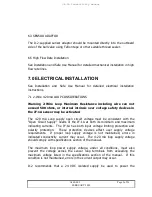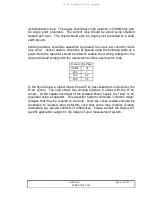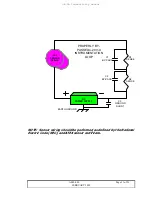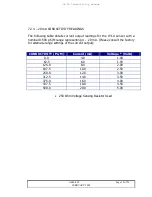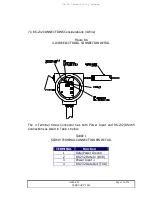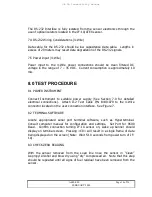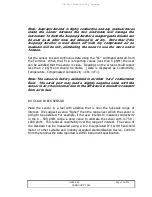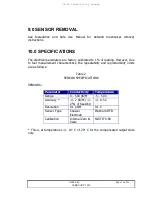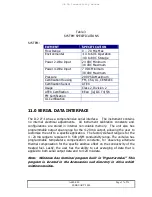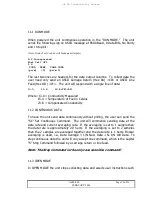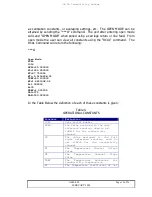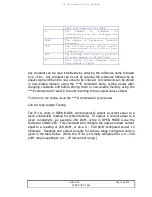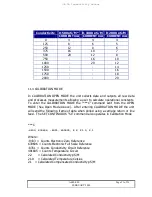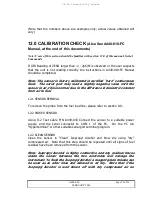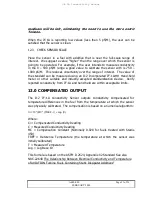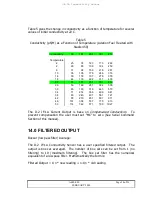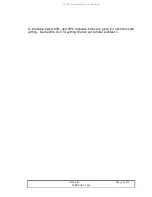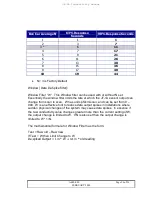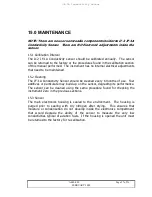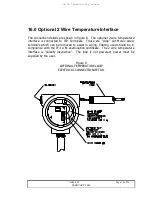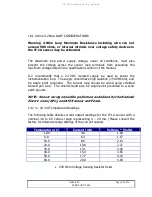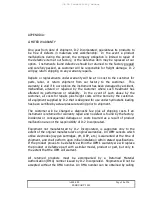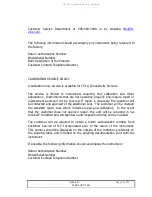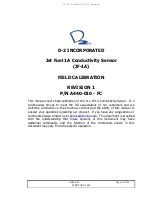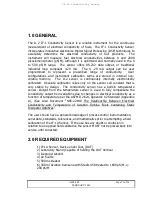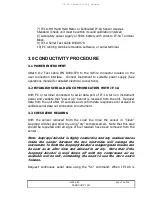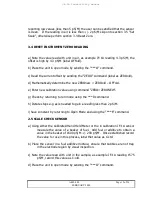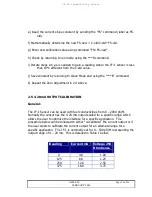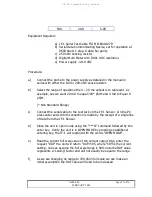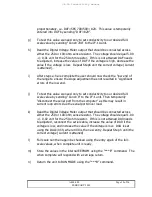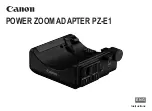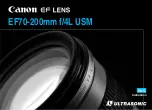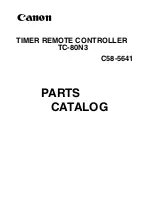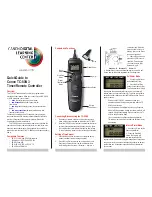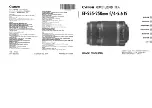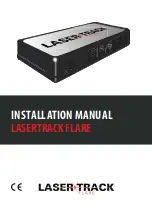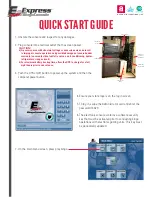
JF-1A Conductivity Sensor
A440-009
Page 23 of 56
FEBRUARY 2009
residuals will be left, eliminating the need to use the more exotic
Toluene.
When the JF-1A is reporting low values (less than 5 pS/M), the user can be
satisfied that the sensor is clean.
12.3
CHECK SENSOR SCALE
Place the sensor in a fuel with additive that is near the full-scale range of
interest. We suggest a value “higher” than the range over which the sensor is
going to be operated. For example, if the user intends to measure conductivity
in the 0 – 500 pS/M range a good value to calibrate the sensor with is 750 –
1000 pS/M. This reduces uncertainty over the range of interest. The value of
the standard can be measured using an D-2 Incorporated JF-1A-HH Hand-held
meter or other suitable and industry-accepted standardization device. Verify
reported conductivity from JF-1A and hand held are within acceptable limits.
13.0 COMPENSATED OUTPUT
The D-2 JF-1A Conductivity Sensor outputs conductivity compensated for
temperature differences in the fuel from the temperature at which the sensor
was physically calibrated. The compensation is based on a numerical algorithm:
Ci = 10^ (MC* (TREF - t) + Log (C)
Where:
Ci = Compensated Conductivity Reading
C = Measured Conductivity Reading
MC = Compensation Constant (Nominally 0.028 for fuels treated with Stadis
450)
TREF = Reference Temperature (the temperature at which the sensor was
initially calibrated)
T = Measured Temperature
Log = Log Base 10
This formula is based on the ASTM D 2624, Appendix X2 Standard See also
NRC-22648 The Relationship Between Electrical Conductivity and Temperature
of AVIATION Turbine Fuels Containing Static Dissipater Additives”

